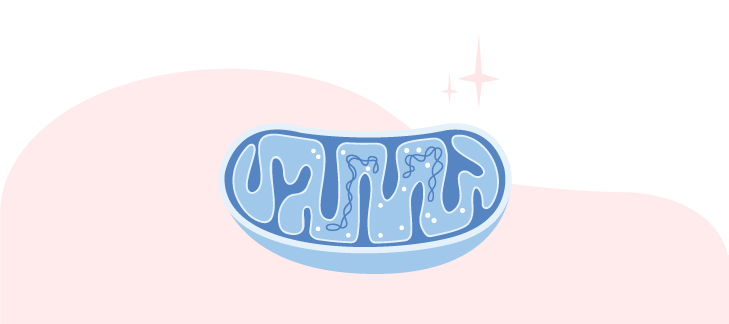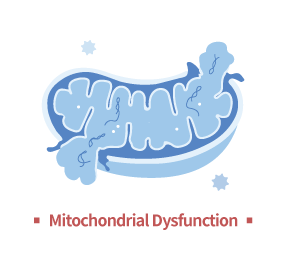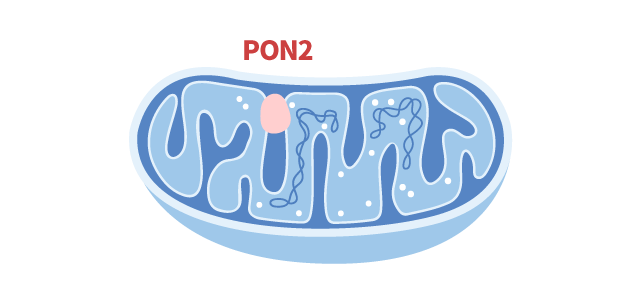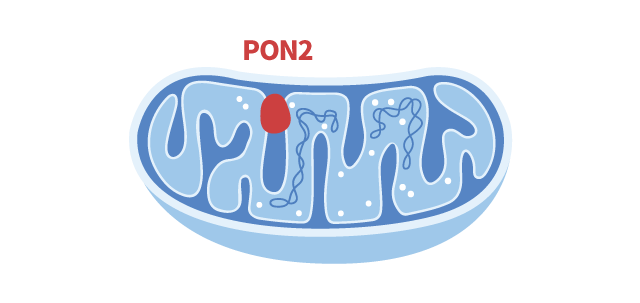SCIENCE
Mitochondria
Mitochondria





-
Obesity
-
NAFLD
-
Dyslipidemia
-
Hypertension
-
Diabetes
-
Neurodegenerative
Disease -
Inflammatory Disease
-
Retinal Disease
Mitochondrial Dysfunction in Diseases


-
Obesity
-
NAFLD
-
Dyslipidemia
-
Hypertension
-
Diabetes
-
Neurodegenerative
Disease -
Inflammatory
Disease -
Retinal Disease
Paraoxonase (PON)
Paraoxonase (PON)


Improving Mitochondrial Function
Improving Mitochondrial Function
The main function of HSG4112 and HGR4113 is to improve the mitochondrial function via PON2 protein, by reducing ROS levels and eventually ameliorating oxidative stress and inflammation. Glaceum additionally discovered that both HSG4112 and HGR4113 induce mitophagy, which is the specific recycling of mitochondria, and autophagy, which is the recycling of overall damaged organelles, via PON2. These effects result in normalization of mitochondria and the cellular energy metabolism. HSG4112 and HGR4113 also have an additional function of removing oxidized LDL from the blood via PON1.